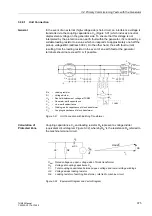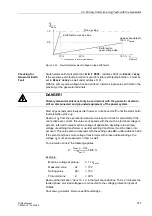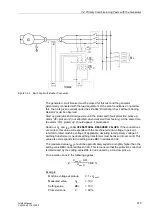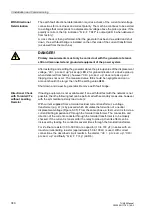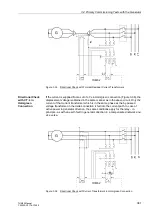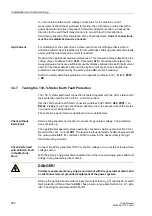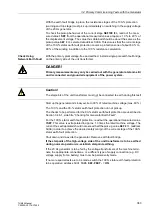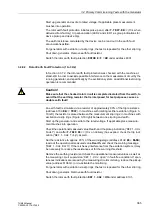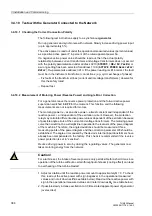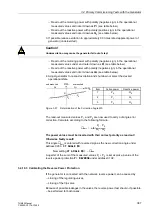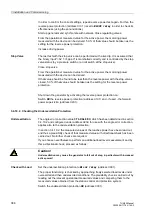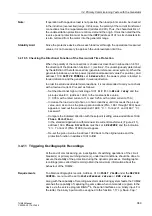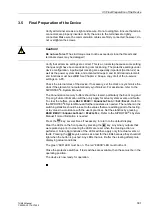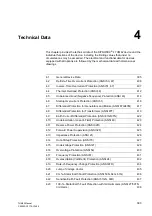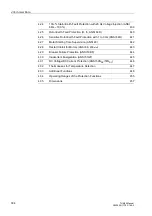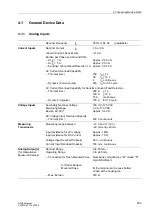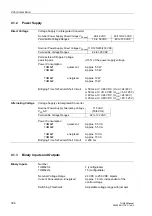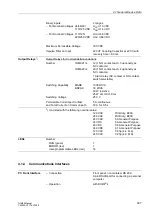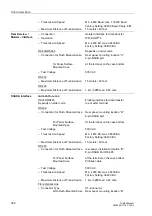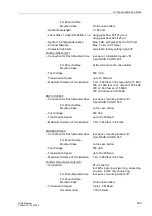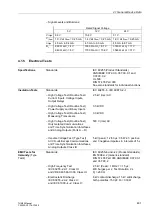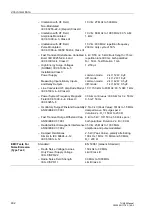
3.4 Primary Commissioning Tests with the Generator
389
7UM62 Manual
C53000-G1176-C149-3
Note:
If operation with capacitive load is not possible, then load points can also be checked
in the inductive (overexcited) range. In this case, the polarity of the current transformer
connections must be re-parameterized (address
0223
). Thus, the characteristics of
the underexcitation protection are mirrored around the origin. It must be noted that the
reverse power protection must be switched
OFF
(address
) as its characteristic
is also mirrored from the motor into the generator range.
Stability Limit
Since the protective device shows each load level through the operational measured
values, it is not necessary to approach the underexcitation limit line.
3.4.10.5 Checking the Directional Function of the Overcurrent Time Protection
When the polarity of the connections is checked as described in subsection 3.4.10.1,
the direction of the protection function I>> (section 2.7) is unambiguously determined
by the definition of the reference arrow (generator reference-arrow system). When the
generator produces an active power (operational measured value P is positive), and
address
is set to
Generator
, the power system is located in
forward direction and the generator in reverse direction.
In order to exclude accidental misconnections, it is recommended to carry out a check
with a low load current. Proceed as follows:
−
Set the directional high current stage
to
Block relay
and the
pick-up value
(address
) to the most sensitive value
(= 0.05 A with a rated current of 1 A and 0.25 A with a rated current of 5 A).
−
Increase the load current (ohmic, or ohmic inductive) until it exceeds the pick-up
value, and, as soon as the pick-up annunciations (FNo.
1801
through
1803
) have
appeared, read out the annunciations
“
and
−
Compare the indicated direction with the setpoint (setting value and address
In the standard application with terminal-side current transformers (Figure 2-11),
address
must be set to
REVERSE
, and the indication
“
” (FNo.
) must appear.
−
Re-set the pick-up value in address
back to the original value and the
protection function in address
to
ON
.
3.4.11 Triggering Oscillographic Recordings
At the end of commissioning, an investigation of switching operations of the circuit
breaker(s) or primary switching device(s), under load conditions, should be done to
assure the stability of the protection during the dynamic processes. Oscillographic
recordings (also called fault records) obtain the maximum information about the
behaviour of the 7UM62.
Requirements
To obtain oscillographic records, Address
under the
DEVICE
CONFIG.
menu must be set to
Instantaneous values
or
RMS values
.
Along with the capability of recording waveform data during system faults, the 7UM62
also has the capability of capturing the same data when commands are given to the
device via the service program DIGSI
®
4, the serial interfaces, or a binary input. For
the latter, the binary input must be assigned to the function “
”

